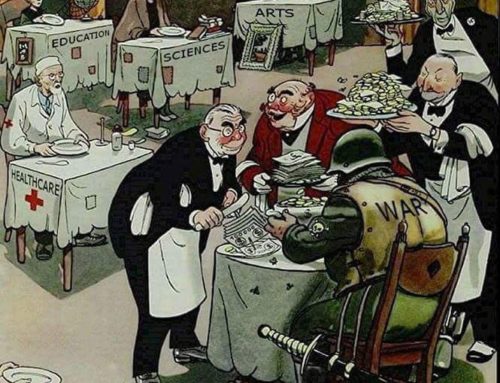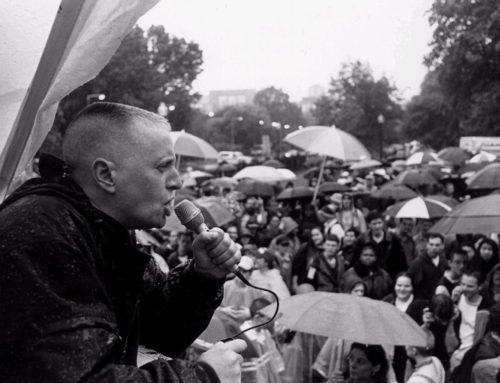by Stephanie McMillan
Mina* was 15 years old last year when she started working at Pretty Group, a garment factory in Gazipur, a suburb of Dhaka, Bangladesh. She spoke of her situation: “We suffer a lot because they don’t give us enough salary. I receive 5000 taka (less than $65) per month. They don’t pay overtime.” This is actually higher than the minimum wage of 3000 taka ($38.72) per month, but is still not even close to being enough to live on, confirmed Faiezul Hakim Lala, the President of the Bangladesh Trade Union Federation. The BTUF is an autonomous (non-NGO-affiliated) workers organization established in 1978. It organizes rickshaw pullers, construction workers, informal laborers, railway, jute mill and garment workers, rice farmers and others.
Lala explained that soon the government is planning declare a higher minimum wage for the workers, but only because they want votes in the coming election. The new proposed minimum wage will be a paltry 4500 taka per month. The BTUF declares that this is totally inadequate, and that the bare minimum to support a family with two children should be 18,000 taka. This takes into account 10,000 tk for basic food (daily calories only for survival, enough just to go the next day to the factory) as well as 4000-5000 tk for rent (for two rooms), 15000 tk for transportation, plus some for medical allowance and children’s education.
Mina said in a soft voice, “I usually work from 7 in the morning until 10 or 11 at night, and sometimes until 3 a.m. They force us to work at night, midnight.” I asked her how she gets home. She said she walks by herself, but that it wasn’t far. “I’m scared but still I do it.” “If we say anything about it [being forced to work extra hours] then they threaten us. We’re scared to lose our jobs.” She lives with her sister, also a garment worker. “Sometimes we say that we should move out from here, but we have no options.”
Mina said that she sewed sweaters, and also attached labels. I asked her what the labels said, but she didn’t remember. She described the colors, though: white with blue and red. I googled some common brand labels on a laptop for her to examine. She recognized one, and pointed to it on the screen, nodding. “Yes, that one.” Tommy Hilfiger. (A brand worth $3 billion in 2010 when PVH Corp. bought it in 2010).
Vijay* is an industrial engineer, also living in Dhaka. Though he has a higher level job, he still works long hours, coming home after 10 p.m. each night, and struggles to make ends meet. He lives with his wife and child in one room of their extended family’s house. He prefers not to name the company he works for, in order not to risk losing his job. It employs 4500 workers who produce garments for major brands including H&M (Sweden), Next (UK) and Gap (USA).
His task is to increase factory efficiency, maximizing production and minimizing cost. He showed me a small metal contraption that attaches to a sewing machine. “This folds belt loops,” he said. “It eliminates one job on each production line.”
He tells me that his company does not hire underage workers, though he knows that many others do. (At a meeting I attended with members of the Garment Workers Union, affiliated with BTUF, several workers confirmed that children under 18 are working at factories producing clothing for JC Penney, Walmart and Disney). “The foreign buyers come often to inspect our factories,” he said, and therefore they comply with age and safety regulations. However, he also said that the owners break the rules when they can get away with it, and provide false records about the workers’ pay. “They show the foreigners papers that say they pay us on time and the proper amounts, but they don’t. They tell them we get one day off per week, but we don’t.”
Vijay showed me a chart that quantified how many minutes it’s supposed to take to produce each garment. Based on that speed, the workers are given production targets, quotas to fulfill within the workday. If these are not met, the workers must work extra hours. The workers can usually keep up the fast pace at first, but soon grow tired, explained Vijay. “Then they are criticized, and told, ‘You are not working properly.’”
For example, one particular item for the Gap is supposed to take 22 minutes and ten seconds. A line of workers is ordered to produce 1000 of these per day. Vijay said, “Our factory group produces 800,000 items per month, minimum. A realistic profit for the factory owner, after all production costs, is at least $2 per item. Think, how much money that is.” I asked him about wages. “The minimum wage was recently raised, but the owners totally ignored it. They also raised production quotas,” he said.
For those who don’t like to do math, the factory owners make $1,600,000 profit after all production costs. That’s after paying $174,240, which would be the total monthly labor cost at the minimum wage, to be divided among 4500 workers.
Mina continued describing her life as a garment worker, “If I am a little late, my supervisor criticizes me a lot, and threatens me that I will lose my job.” I asked her if she had ever been physically abused. She replied, “They have not beaten me but they do it to the helpers of the operators – they usually slap them or beat them. I’ve seen that. They are 14 or 15 year old girls, and some older women too.”
I asked her if she knew that in stores in the west, the sweaters she made often cost $40-$50 or more. Her face fell. “No,” she whispered. I asked, “How would the workers feel to know that they work two weeks or a month for the final retail price of a single sweater?” Mina seemed close to tears. “I feel bad.
This will hurt our feelings, but we don’t have any choice. We have to work, that’s all.”I asked Mina if there was anything she wanted to tell people who might see her interview in other parts of the world. She replied, “I want everyone should know this story, then we won’t suffer, maybe people could help us. It’s good for it to be exposed, how we’re suffering.”
I asked her, finally, “What do garment workers want?” The translator said he wasn’t sure Mina was mature enough to answer this question, but agreed to ask her anyway. She didn’t hesitate, or need to think about it. She sat very straight, her voice becoming strong. “We want proper hours of work, 8 hours, which is the official law. Not more than that. We want a proper salary. The right amount for us to live. We want them to pay us on time. And we don’t want to be forced to work extra hours. That’s all we want.”
*Mina and Vijay are false names, to protect their identities.



Awesome blog site, how can I show my gratefulness to this site owner? It’s so amazing to me. Thank’s for all convenience.
[…] provide a material alternative to it. Indeed, until garment workers in countries like Haiti and Bangladesh, who are involved in producing the commodities sold in retail stores, are able to challenge capital […]
I have read this post attentively. This post is so informative and educative. I think, the post is very important. I agree with you. It’s really an awesome article. I completely believe that the success of a garment factory totally depends on its workers. So the salary should be increased of garment workers. Thank you so much for this post.